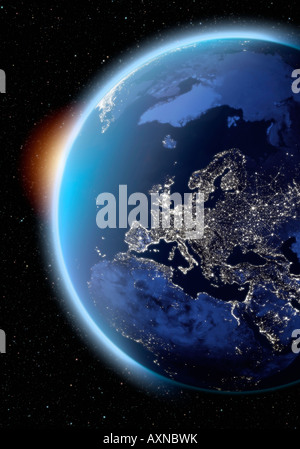


Since November 2011, that data has come primarily from the new satellite, called Suomi NPP, which is an amalgam of a meteorologist’s name and an acronym soup that comprises NASA, NOAA, and the U.S. “The maps tell us so much about skyglow, but we have also learned an awful lot about humanity just by studying the patterns of where that light appears at night.” … Will we see just a steady glow all the time from cities? Or will we literally see cities blinking?” asks John Barentine, the program manager for the International Dark Sky Association. “To be honest, I don’t know what we’ll see. This will be a sea change in the way scientists study light at night, and how our dependence on it is changing our planet. Now, researchers are on the cusp of producing these maps not every decade, but every night. Programmers are making computers smarter, allowing them to erase moonlight and atmospheric dust, leaving only the glow of human-made light.

But a new satellite that joined the fleet a few years ago has a light collector that’s easier to use, and sees with 250 times better resolution than before.

No satellite has ever been built expressly to study these lights, so producing the maps is a challenge. And it is one of the best ways to see changes in how we inhabit it.ĭuring the past 25 years, NASA has used its fleet of satellites to put together a few maps of these lights, which you can download and hang in your office, and which researchers can use to study population trends, development, and other global-scale changes. Artificial light is arguably the clearest sign that Earth is an inhabited planet. You can follow rivers, railroads, and highways by the communities that cropped up along them. The world’s metropolises glow yellow-white, as if someone sprinkled the continents with a dusting of tiny stars. There are no cities or ports or bridges.īut look at night, and you will see a very different planet. It’s impossible to tell anyone is home, especially anyone who thinks, and moves around, and builds things. Our blue marble is interspersed with the lush green of forests, but that’s about the only sign of life. As seen from space, Earth looks quiet, and a bit lonely, during the day.


 0 kommentar(er)
0 kommentar(er)
